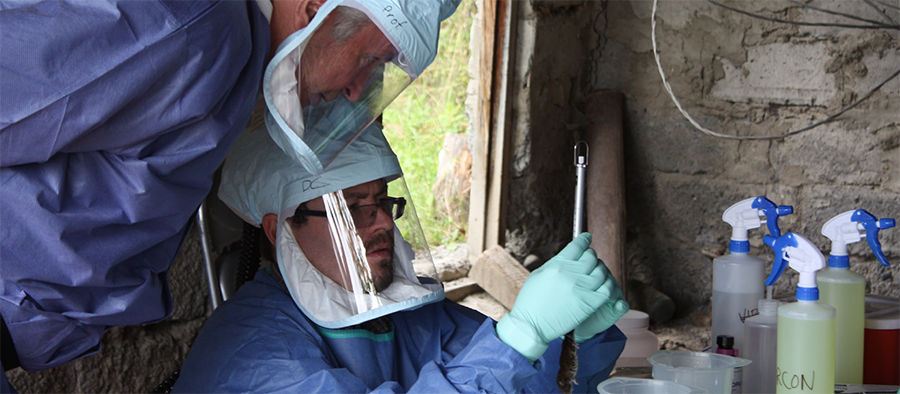Appendix A: Core Components to Achieving the Highest Attainable Level of Health

Two disease detectives from the country of Georgia investigate a case of novel Orthopoxvirus while wearing personal protective equipment (PPE).
The General Comment 14, developed by a committee of independent experts on Economic, Social and Cultural Rights (ESCR), identifies four core components essential to the progressive realization of the right to health. According to Article 1, “The realization of the right to health may be pursued through numerous, complementary approaches, such as the formulation of health policies, or the implementation of health programmes developed by the World Health Organization (WHO), or the adoption of specific legal instruments” [17]. According to WHO, “No matter what level of resources they have at their disposal, progressive realisation requires that governments take immediate steps within their means towards the fulfillment of these rights” [18].
Availability – speaks to resources, such as functioning health infrastructures, and programs that are available to support the progressive realization of the highest attainable level of health. Availability also includes the underlying determinants of health, such as adequate potable water, sanitation, hospitals, clinics, and qualified healthcare professionals. CDC activities should strive to help ensure availability of programs and infrastructure to support long-term sustainability to address health equity.
Accessibility – means that everyone has access to the resources available for health. To ensure that everyone has access, four dimensions are necessary:
- Non-discrimination – everyone should have access regardless of race, color, sex, language, religion, political or other opinion, national or social origin, birth, mental or physical disability, health status, sexual orientation, and other grounds described in paragraph 18 and 19 of the General Comment 14 [16].
- Physical accessibility – Everyone can access facilities, good and services, in terms of safe physical reach and regardless of disability or being in disadvantaged groups.
- Economic accessibility (affordability) – Ensure that facilities, goods and services are affordable, and fee/payment is based on equity
- Information – The right to have access to information, including personal health information is critical
Acceptability – medically, ethically, culturally, and with respect to gender and other needs of individuals and groups.
Quality – according to WHO, “Quality is a key component of Universal Health Coverage and includes the experience and perception of health care.” Quality includes safety, effectiveness, people-centered, timeliness, equitable, integrated, and efficient [16].